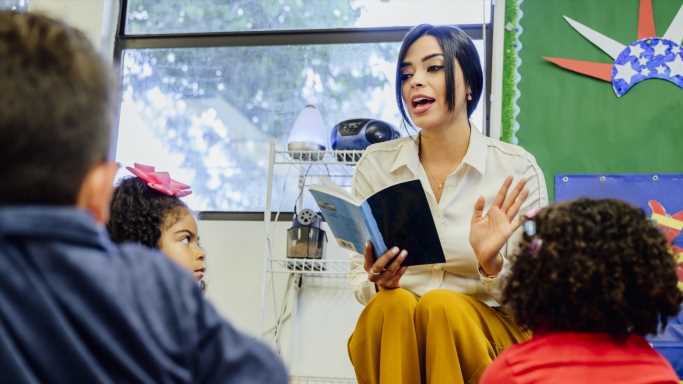The importance of socialization, proper nutrition, and education during early childhood is difficult to overstate. Multiple studies have linked enrollment in quality early childhood education programs with a greater chance for success, not only academically during school years, but also later in life — reducing the likelihood of poverty, unemployment, and criminality.
While the COVID-19 pandemic has reduced access to pre-K programs across the United States, school districts are beginning to reopen. Annual pre-K spending in the United States totals $6,329 per pupil on average, and an estimated 46.2% of 3- and 4-year-old children are enrolled in preschool. These, and other key measures of investment, accessibility, and quality vary considerably by state, however.
Using data from the National Institute of Early Childhood Education Research and the U.S. Census Bureau, 24/7 Wall St. created an index consisting of a state’s pre-K spending, enrollment rates, assistance for needy families, fourth grade reading and math proficiency, and certain quality standards, to rank states’ overall quality of early childhood education programs, from the worst to the best.
In many states, early childhood education programs specifically target at-risk children. These publicly funded pre-K programs prioritize enrollment for children facing challenging conditions outside of the classroom. While who is considered at risk may vary from state to state, children in foster care, children with disabilities, and children in low-income households are often included. Here is a look at how many children live in poverty in your state.
While most states offer some public pre-K option, many children, particularly those not considered to be at risk, are not prioritized for enrollment. In these cases, families will often enroll their child in a private preschool or seek other child care options. Parents who can afford to pay the tuition may also choose private preschool , even if a public option is available for their child. Nationwide, 40.6% of children in pre-K are in a private program, and 59.4% are in a public one. Here is a look at the best private high school in each state.
Click here to see states with the best and worst early education.
Click here to see the detailed methodology.
Source: Read Full Article
